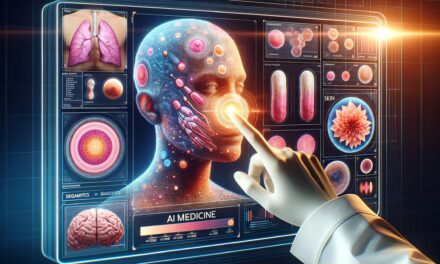AI technologies are enhancing diagnostic accuracy and improving clinical workflows in dermatology, according to recent case studies.
Artificial Intelligence (AI) is increasingly being adopted in dermatology to enhance diagnostic accuracy, optimize clinical workflows, and ultimately improve patient outcomes. This technology leverages machine learning algorithms to analyze vast amounts of data, providing dermatologists with powerful tools to improve their practice efficiency and diagnostic precision.
AI has shown potential in improving the accuracy of dermatological diagnoses. Machine learning models, particularly those based on deep learning, can analyze images of skin lesions with high precision. These models are trained on extensive datasets comprising millions of images, allowing them to recognize patterns and features indicative of various skin conditions, including melanoma, psoriasis, and other dermatological diseases.
A notable case study involves an AI system developed to detect melanoma. Research published in JAMA Dermatology demonstrated that this AI model could match or even exceed the diagnostic accuracy of experienced dermatologists (Stanford Medicine). By identifying malignant lesions at an early stage, AI tools significantly improve the chances of successful treatment and patient survival.
Optimizing Clinical Workflows

In addition to enhancing diagnostic accuracy, AI-driven solutions are improving dermatology practice management by streamlining workflows. AI can automate routine tasks such as patient triage, image analysis, and medical record documentation, freeing up valuable time for dermatologists to focus on patient care.
Case Study: Automating Image Analysis
In a clinical setting, an AI tool was integrated to assist with the analysis of dermoscopic images. This tool rapidly processed images, identified potential areas of concern, and prioritized cases that required immediate attention.
The implementation of this AI solution reduced the time required for image analysis by over 50%, allowing dermatologists to manage their caseload more efficiently (RevenueCycle.ai).
Case Study: AI-Powered Triage Systems

Another example is the use of AI-powered triage systems in dermatology clinics. These systems analyze patient data and symptoms to determine the urgency of cases. In one study, the implementation of an AI triage system led to a 30% reduction in patient wait times and improved the overall workflow of the clinic (McKinsey & Company).
Real-World Applications and Outcomes
AI’s integration into dermatology practices is not just theoretical; real-world applications have demonstrated substantial benefits. For instance, a dermatology clinic incorporated an AI-driven diagnostic tool to assist with the evaluation of skin lesions. Over six months, the clinic observed a 20% increase in diagnostic accuracy and a 15% reduction in the time taken to diagnose conditions (MedicalBillersandCoders).
Another practical application involved the use of AI in teledermatology. Patients used a mobile app to capture images of their skin conditions, which were then analyzed by AI algorithms. The AI provided preliminary diagnoses and suggested whether a follow-up with a dermatologist was necessary. This approach not only increased accessibility to dermatological care but also ensured that patients received timely advice and intervention.
Looking Ahead
AI-driven solutions are improving dermatology practice management by enhancing diagnostic accuracy and optimizing clinical workflows. Through real-world applications and case studies, it is evident that AI has the potential to improve patient outcomes and operational efficiency in dermatology practices. As technology continues to evolve, the integration of AI in dermatology will likely expand, offering even more sophisticated tools for diagnosis and treatment.
References
- “AI in Melanoma Detection: Accuracy and Clinical Implications.” JAMA Dermatology.
- “Evaluating AI in Clinical Settings for Skin Cancer Detection.” Stanford University.
- “Automation and AI in Dermatology Practice Management.” Medical Billers and Coders.
Photo 110733681 © Nastassia Bas | Dreamstime.com



